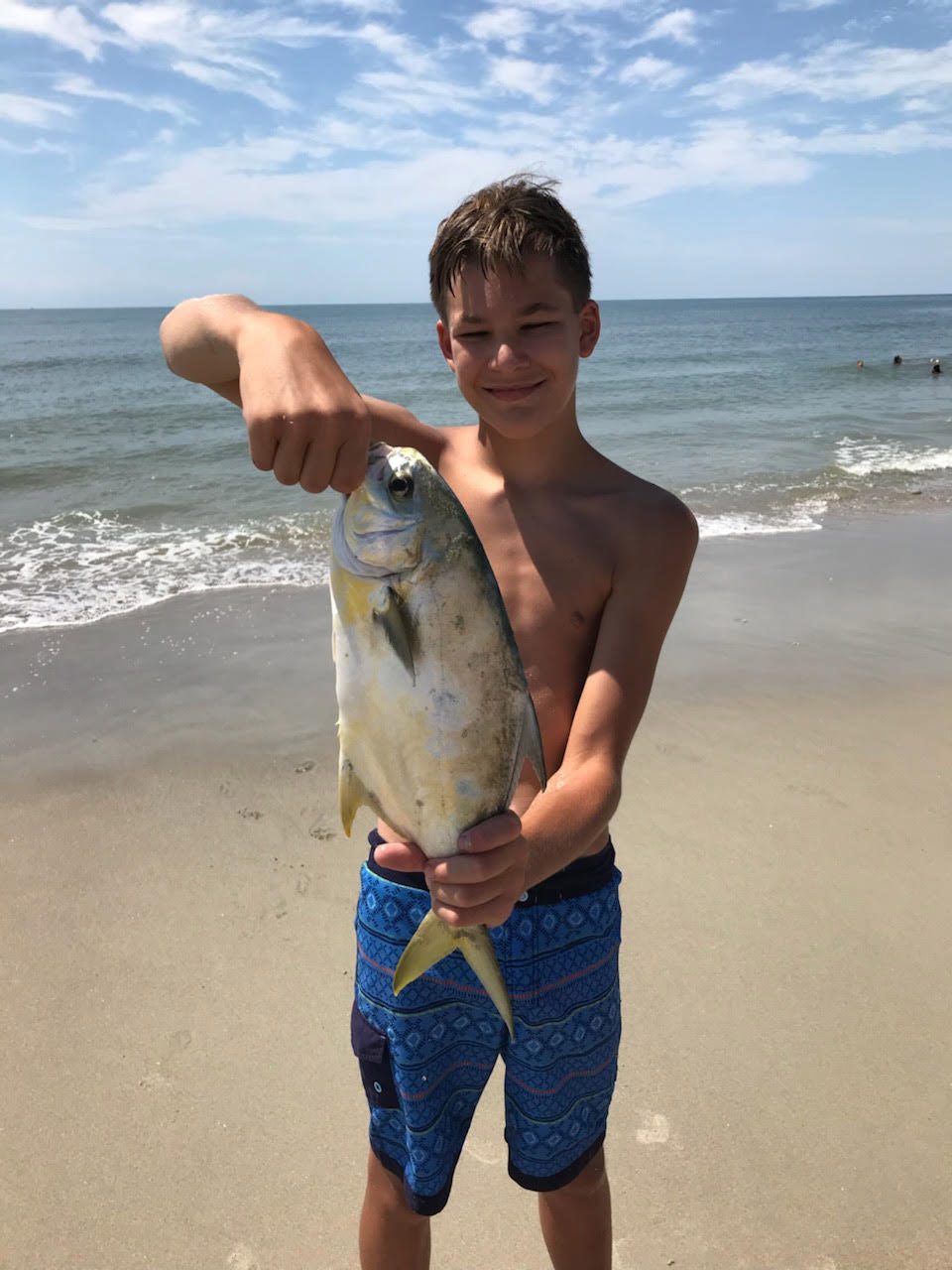Ocean Isle/ Holden Beach – Aug 2, 2018
Jeff, of Ocean Isle Fishing Center, reports that the key right now is to find the cleanest water that you can. Getting into the ICW at the halfway point between two inlets, where there isn’t much tidal flow, seems to be the best tactic. You can find shrimp at low tide coming out from little creeks into the waterway, and these shrimp will be your best option for bait.
Throw as many of the shrimp as you can into the cleanest water you can find, and you’re likely to bring up some nice black drum, flounder, and trout.
Overall, the name of the game is studying weather patterns and finding the best windows of opportunity to get out there. Once the weather passes, things should return to normal.
Brant, of Ocean Isle Fishing Center, reports that strong winds over the last week have really been hurting chances to get offshore. The spanish mackerel that were biting near the beach have moved to deeper water and are now a lot harder to find.
Kings are showing up decently in 65’ of water, but the fishing is better in depths beyond that.
On the other hand, bottom fishing has stayed consistent, and all signs are pointing to the opening of red snapper providing a lot of great fishing opportunities. Use live bait in depths of 85-110’ of water and you’ll be good to go.
Overall, fishing will improve once a front turns the wind east and brings in some new, clean water. Until then, keep fishing deep to have the best success.

Caroline Raymer, of Cary, NC, with a flounder caught two miles off of Oak Island on a Stingsilver douple-drop rig. She was fishing with her father, David, and Glenn Pilcher, of the Fin Reaper.
Kevin, of Rigged and Ready Charters, reports that wind and waves have prevented good spanish and king mackerel trips. Both species are still out there, but expect them to be a little deeper than usual.
The best fishing is definitely on the bottom, where the changes in water temperature and clarity haven’t disturbed the patterns of the fish normally found there. Grouper have been the biggest and best target, especially from 45-55 miles offshore in about 90-110’ of water.
Beeliners, black sea bass, triggerfish, jacks, grunts, and big American red snapper are also biting in the same depths. Using live pinfish, cigar minnows, or menhaden should get a big bite.
Tripp, of Capt’n Hook Outdoors, reports that inshore, the flounder bite has slowed down a bit. There are still some fish around, though, and they’re all pretty much in the 17-20” range. Most of the flatfish have been hitting live peanut pogies.
The redfish bite has been steady around deeper holes near the inlets, and they’re mainly biting live shrimp on float rigs.
Specks have been chewing on live shrimp and Carolina-rigged mullet, and most of the fish have been between 16-18”.
Off the beach, the spanish mackerel bite has slowed down, but you can still come across the occasional fish when trolling Clarkspoons on planers.
Flounder are making a decent showing on the nearshore reefs, where live mullet and Gulp-tipped bucktails will attract attention.
A little further offshore, king mackerel are biting in the 65’ range, and expect them to move even deeper as the fresh water continues to push offshore. Most of the kings have been in the 10-15 lb. range, but some have been even bigger. The bigger kings are eating live bait, but if you’re going for quantity, you can’t beat dead cigar minnows.
Tim, of Tideline Charters, reports that the rain has muddied up area waters a bit, but flounder and red drum are still out there and happy to bite. Flounder fishing has been more successful around grass points, where mud minnows are drawing the most strikes.
The reds are more apt to hit small pogies fished on the bottom near creek mouths. Most of the upper-slot fish have been found during the first few hours of the rising tide.
Some nice speckled trout have moved in and are falling for darker-colored Vudu Shrimp, or live shrimp, under a popping cork. As per usual, you have a much better chance of finding a speck during the first part of the morning. Target higher water and shell banks, especially in the Calabash area, to increase chances of finding a fish.

Riley Hutchinson landed this 2.75 lb. citation pompano in the surf at Ocean Isle Beach. The fish fell for live shrimp.
Stewart, of Rod and Reel Shop, reports that rain and dirty water have slowed fishing down tremendously, though it has cooled the abnormally high water temperatures that have been plaguing the area.
Trout, flounder, and drum are all still swimming in the backwaters.
Kings and spanish have moved to deeper waters due to the weather, and nothing has been consistent.
Donnie, of Ocean Isle Beach Fishing Pier, reports that some drum, pompano, and the occasional flounder were being caught before the wind started coming in to slow the bite down. After the bad weather started, anglers have found nothing more than a couple of croaker and whiting here and there.
